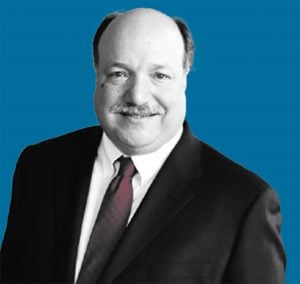 The DOL holds plan sponsors responsible for diligently documenting how they select and monitor each investment option. The more investment options, the more likely that process will break down. (Photo: Shutterstock)
The DOL holds plan sponsors responsible for diligently documenting how they select and monitor each investment option. The more investment options, the more likely that process will break down. (Photo: Shutterstock)
Now that all the low-hanging fruit has been picked, don't be surprised if tort attorneys start looking for other vulnerabilities in 401(k) plans. Like fees—the original low hanging fruit—the next target has to be something easily measurable. Not just the number, but the process behind the number.
If you recall, it wasn't the size of the fee that got plan sponsors in trouble, it was the faulty process that failed to successfully rid the plan of higher-priced funds.
So, why not target the number of options on the plan's investment menu? Well, not just the number of options, but the process behind the number.
Related: Set-it-and-forget-it plan design could harm 401(k) investors
 Christopher Carosa, CTFA, is chief contributing editor for FiduciaryNews.com, a leading provider of essential news and information, blunt commentary and practical examples for ERISA/401(k) fiduciaries, individual trustees and professional fiduciaries.
Christopher Carosa, CTFA, is chief contributing editor for FiduciaryNews.com, a leading provider of essential news and information, blunt commentary and practical examples for ERISA/401(k) fiduciaries, individual trustees and professional fiduciaries.First, why focus on the number of menu options? Because there's academic evidence to support the theory that too many choices hurt plan participants. A pair of seminal studies bookending the first decade of the millennium bear this out. Benartzi and Thaler's “Naïve diversification strategies in defined contribution saving plans” (American Economic Review 91 (2001), 79–98) showed employees tend to simply spread their wealth among all plan options.
Nine years later, Iyengar and Kamenica's “Choice proliferation, simplicity seeking, and asset allocation” (Journal of Public Economics 94 (2010), 530–539), showed “for every 10 additional funds, allocation to equity funds decreases by 2.78 percent while the probability that an employee puts no money whatsoever in equity funds increases by 3.15 percent.”
There's more to the process, though. The DOL holds plan sponsors responsible for diligently documenting how they select and monitor each investment option. The more investment options, the more likely that process will break down.
It gets worse. It's not just the process, it's the depth of the process. Due diligence requires plan sponsors to evaluate investment options in light of plan demographics. This means measuring the appropriateness of every investment option for every category of employee. That's easy for target date funds, since the demographic cohort is identified in the fund name. For other funds, things can get a little dicey.
But there is a way plan sponsors can and are addressing this. It's a “tiered investment structure.” It places groups of funds into distinct categories. According to the Callan Institute, a tiered investment structure “allows plan sponsors to build fund lineups for a heterogeneous participant base that includes 'do-it-for-me' (tier 1), 'do-it-myself' (tier 2), and 'investment savvy' participants (tier 3).”
A tiered investment structure offers two advantages. First, it permits the plan to contain the same number of funds while reducing (actually narrowing) the choice. That's because the employee picks the category first, then picks among the funds within that group.
Second, and perhaps more important, it also narrows the nature of the due diligence process for each option. A plan sponsor will only need to address plan demographics in terms of each tier. That makes the process easier to document and narrows its scope.
Maybe that's why nearly two-thirds of all 401(k) plans already feature a tiered investment structure in their plan's menu.
Read more:
© 2025 ALM Global, LLC, All Rights Reserved. Request academic re-use from www.copyright.com. All other uses, submit a request to [email protected]. For more information visit Asset & Logo Licensing.







